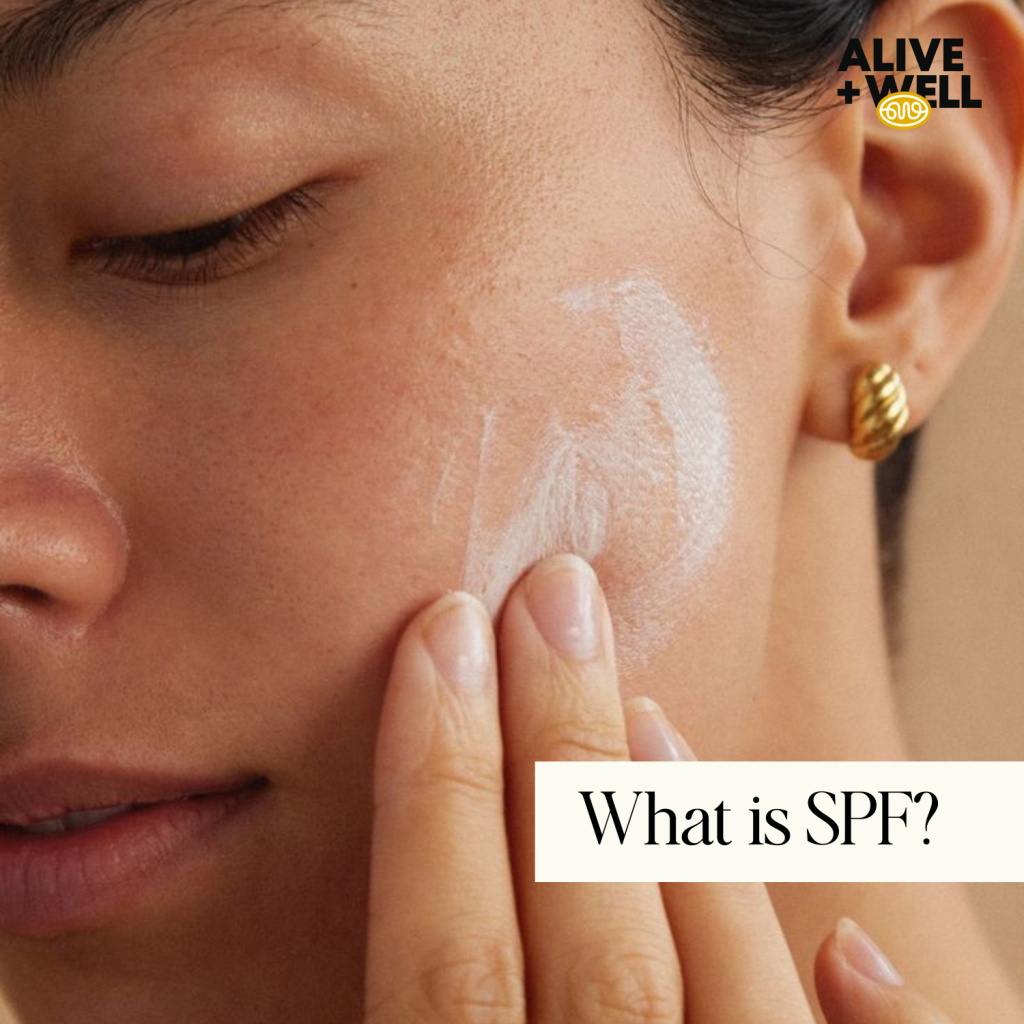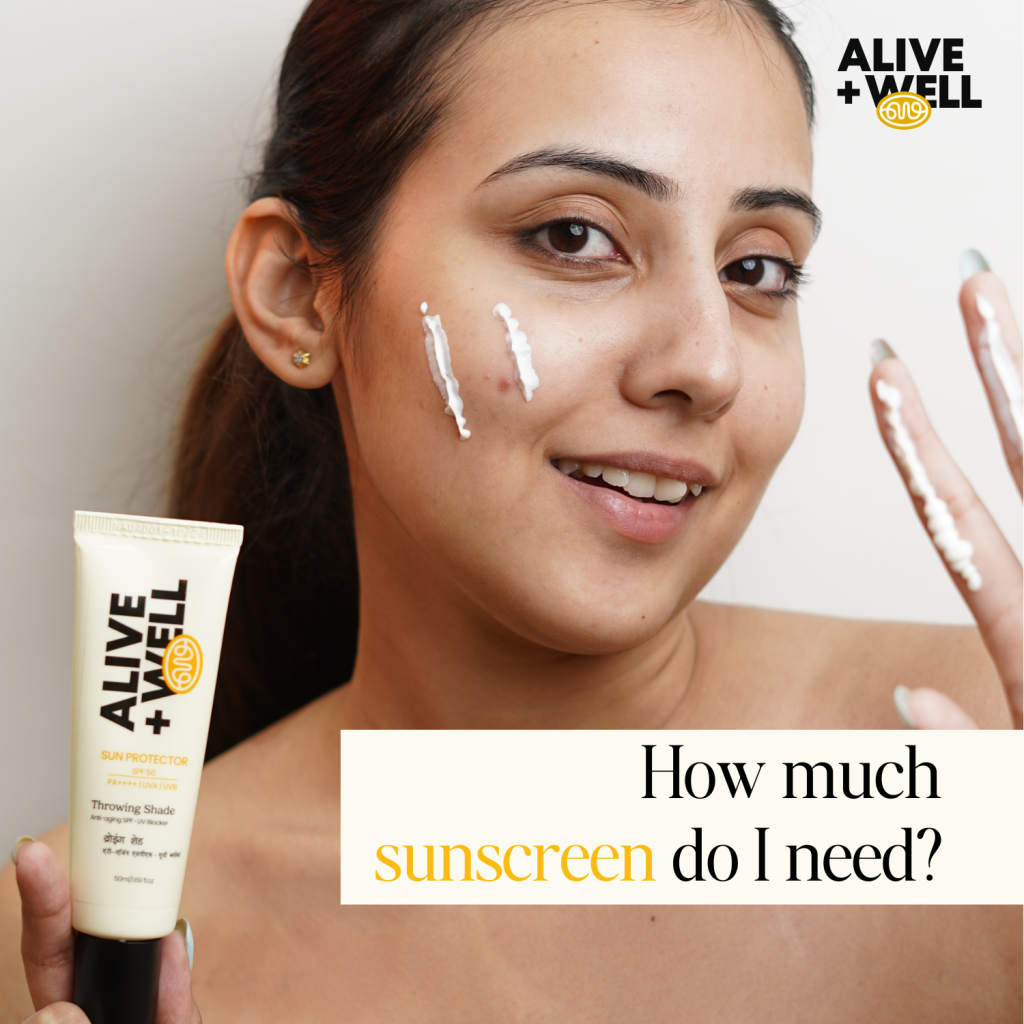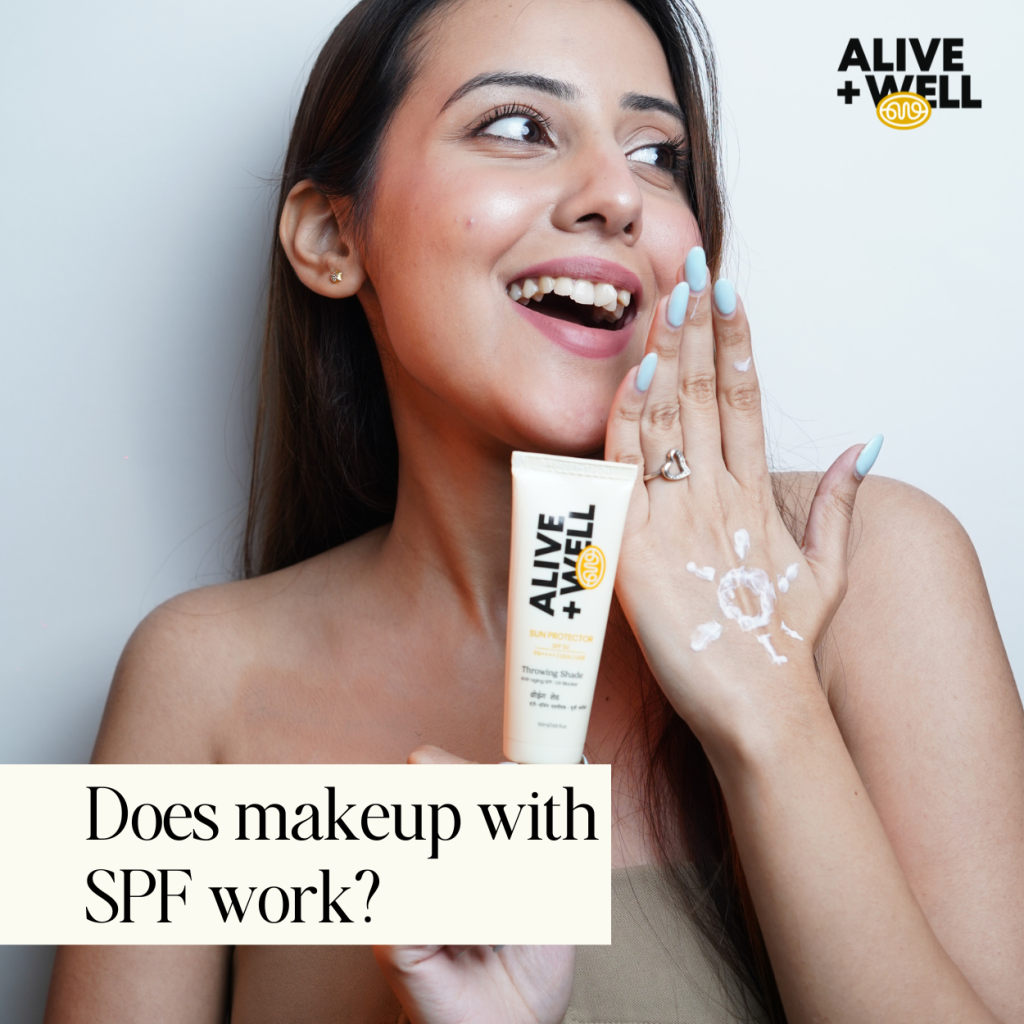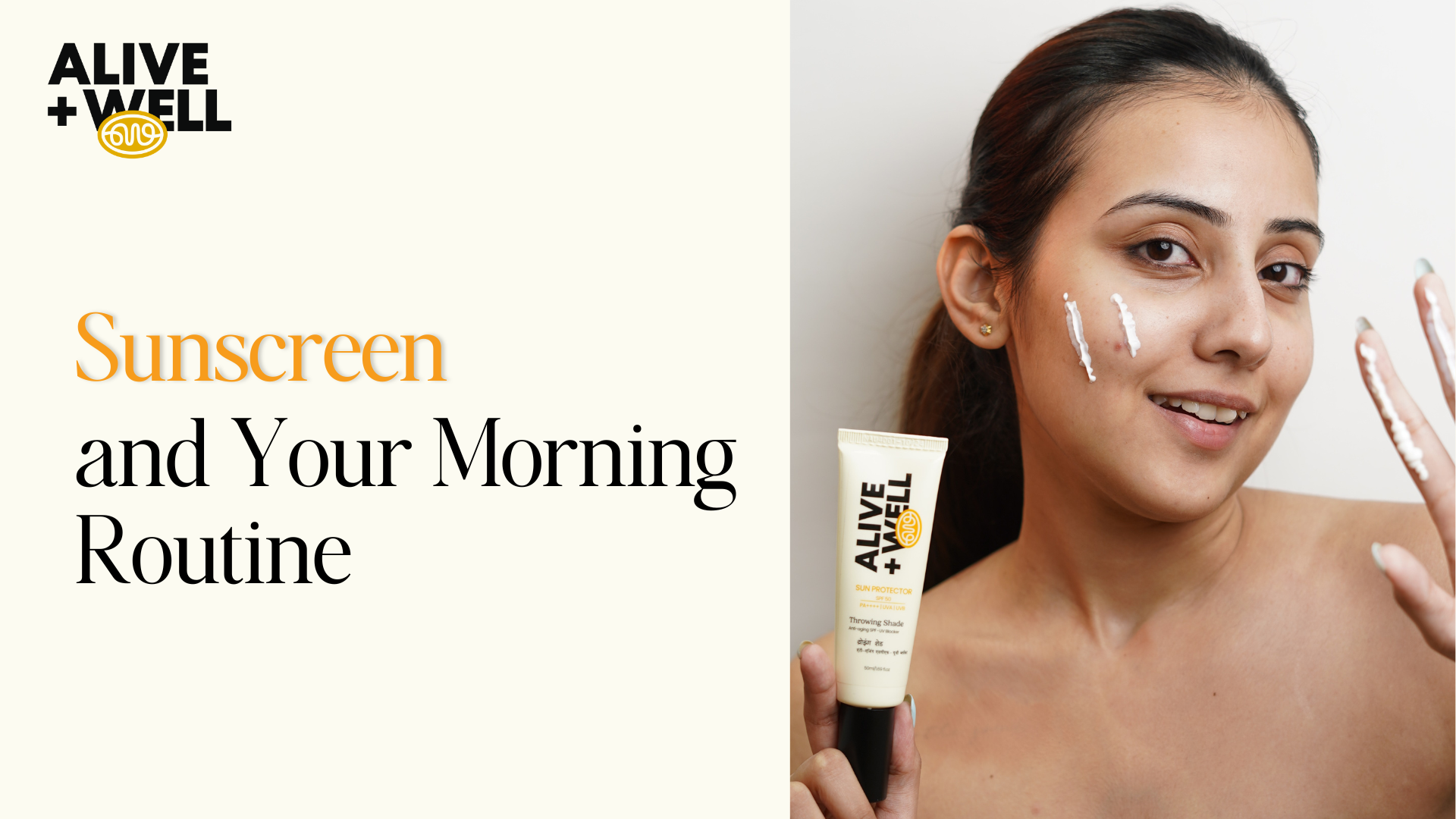Sunscreen and Your Morning Routine
Incorporating sunscreen into your morning routine is one of the most effective ways to protect your skin from harmful UV rays. Even on overcast days or when you’re indoors, UV radiation can still reach your skin, causing premature aging, dark spots, and increasing the risk of skin cancer. Sunscreen acts as a protective barrier against these harmful rays, preventing long-term damage and maintaining skin health.
How much sunscreen for face?
For maximum benefit, apply sunscreen after your moisturizer but before makeup. Look for a broad-spectrum formula with at least SPF 30 for daily use. If you’re using a separate moisturizer, wait a few minutes for it to absorb before applying sunscreen to ensure it doesn’t interfere with the sunscreen’s effectiveness. Don’t forget areas like the ears, neck, and hands—often overlooked, but still exposed to sunlight.
Sunscreen in the morning
Make sunscreen an essential part of your morning routine, even on days you plan to stay indoors. UV rays can penetrate windows and affect your skin. Reapply every two hours if you’re spending time outside or sweating. By making sunscreen a habit, you’ll not only protect your skin from immediate damage but also keep it looking youthful and healthy in the long run. It’s one simple step that can make a lasting difference.
What is SPF?

SPF stands for Sun Protection Factor, and it’s a measure of how well sunscreen protects your skin from the sun’s UVB rays.SPF stands for Sun Protection Factor, and it’s a measure of how well a sunscreen protects your skin from ultraviolet (UV) radiation, specifically UVB rays, which are the primary cause of sunburn and contribute to skin cancer risk.
SPF is a numerical value that indicates the level of protection a sunscreen provides. Here’s how it works:
Buy Sunscreen Online
SPF 30, for example, means that if your skin would normally start to burn after 10 minutes of sun exposure, using SPF 30 sunscreen would allow you to be in the sun 30 times longer—about 300 minutes (5 hours)—without burning, assuming you apply it correctly and reapply as needed.
An SPF rating of 50 offers slightly more protection than SPF 30, but the difference is relatively small. SPF 50 blocks about 98% of UVB rays, whereas SPF 30 blocks about 97%. No sunscreen blocks 100% of UV rays.
However, SPF is just one part of sun protection. It doesn’t account for UVA rays, which contribute to skin aging and long-term damage. For broad-spectrum protection, look for sunscreens that protect against both UVA and UVB rays. Additionally, sunscreen needs to be reapplied regularly, especially after swimming, sweating, or towel-drying.
What sunscreen should I buy?
For day-to-day use, pick a sunscreen with an SPF of at least 30. If you spend time outdoors, choose a product with SPF 60 or greater. In reality, most people do not use as much sunscreen as they should, and this higher SPF helps compensate for the reduced application.
Dermatologists recommend using a sunscreen with an SPF of at least 30, which blocks 97% of the sun’s UVB rays. Higher-number SPFs block slightly more of the sun’s UVB rays, but no sunscreen can block 100% of the sun’s UVB rays.
How much sunscreen to use on face?

To get the full protective benefit of sunscreen, it’s important to apply the right amount. Most people don’t use enough, which can significantly reduce the effectiveness of sun protection. Here’s a general guideline:
1. The “Shot Glass” Rule
The standard recommendation is to apply about 1 ounce (30 grams) of sunscreen to cover your entire body. This is roughly the amount that fits in a standard shot glass. For your face, about 1/2 teaspoon (roughly 2.5 grams) is recommended.
How Much to Apply to Each Area:
- Face: 1/2 teaspoon (about 2.5 grams). This covers your face, ears, and neck.
- Arms (each arm): About 1 tablespoon (15 grams) for each arm.
- Legs (each leg): About 1 tablespoon (15 grams) for each leg.
- Chest and Back: About 1.5 tablespoons (20 grams) for each area.
If you’re using spray sunscreen, it’s typically easier to apply, but make sure you spray generously and rub it in to ensure full coverage. Don’t just spray once and go; you should aim for about 6–7 sprays per area (e.g., for each arm, leg, etc.) and rub it in well.
Reapplication
Sunscreen needs to be reapplied every 2 hours, and more often if you’re swimming, sweating, or towel-drying. Even water-resistant sunscreens will lose their effectiveness after a while, so regular reapplication is key for optimal protection.
Other Tips for Effective Sunscreen Use:
- Don’t forget to apply sunscreen on overlooked areas like your ears, the back of your neck, and the top of your feet.
- Don’t apply too sparingly. Sunscreen works best when applied in generous amounts to ensure you are adequately protected.
- Use sunscreen as the final step in your skincare routine. If you’re layering it over moisturizer, let your moisturizer fully absorb before applying sunscreen to avoid dilution or uneven application.
In short, be generous with your sunscreen application to make sure your skin gets the protection it needs.
Should sunscreen come before or after other products?
Sunscreen should always be applied after other skincare products, meaning it should be the last step in your routine before applying makeup; this ensures that the sunscreen layer sits on top of your other products and provides maximum protection.
Key points to remember:
- Application order: Cleanser, toner, serum, moisturizer, then sunscreen.
- Reasoning: Sunscreen is designed to create a barrier on the skin, so applying it on top of other products ensures it can effectively block UV rays.
- Important consideration: Allow your sunscreen to fully absorb before applying makeup.
Does makeup with SPF work?

Yes, makeup with SPF can provide some sun protection, but it’s not enough on its own:
Low SPF
Most makeup with SPF only has SPF 15 or 30, which is below the recommended minimum of SPF 30 for daily use.
Uneven application
Makeup is usually applied for cosmetic purposes, so areas of your face may be left exposed.
Sheer coverage
Makeup is designed to be lightweight and blendable, which can result in a sheer layer of protection.
Not enough product
You’d need to use a lot of makeup with SPF to effectively protect your skin.
To maximize sun protection, you can:
- Apply sunscreen with at least SPF 30
- Apply makeup with SPF 30
- Apply sunscreen after washing and moisturizing your face
- Use broad-spectrum sunscreen products
- Reapply sunscreen about every two hours
- Apply SPF first and then apply your makeup on top
- Use a moisturizer with SPF in it
You can also layer makeup over sunscreen to boost total sun protection. All makeup, even products that don’t have built-in SPF, contains filters that can provide added protection.
Throwing Shade SPF 50 PA++++ Sunscreen
Throwing Shade SPF 50 PA++++ Sunscreen by Alive and Well is a standout sunscreen that delivers powerful protection while feeling lightweight and comfortable on the skin. With a high SPF 50 and PA++++ rating, this sunscreen offers broad-spectrum protection, blocking both UVA and UVB rays. UVA rays, which are responsible for skin aging and long-term damage, and UVB rays, which cause sunburn, are effectively shielded, making this sunscreen an excellent choice for everyday use.
What sets Throwing Shade apart is its formula, which combines mineral and chemical sunscreen ingredients, providing a balanced and non-greasy finish that works well for a variety of skin types. The texture is smooth and lightweight, making it easy to apply and comfortable for daily wear, even under makeup. It absorbs quickly without leaving a white cast, which is often a concern with many high-SPF sunscreens.
In addition to sun protection, this sunscreen also contains nourishing ingredients like antioxidants to help combat environmental damage and keep skin looking healthy. Its formula is gentle, so it’s suitable for sensitive skin as well. Whether you’re outdoors or indoors, Throwing Shade SPF 50 PA++++ is an essential product that ensures long-lasting, reliable protection against harmful UV rays, keeping your skin safe, youthful, and glowing.
Frequently Asked Questions About Sunscreen
1 Can we use sunscreen in winter?
Yes, sunscreen in winter is a must. Experts recommend you use sunscreen when UV is 3 or above. It’s important to use sun care in winter even if the sun doesn’t seem that strong, because it’s the radiation that causes sunburn and sun damage, not how hot or strong the sun is.
2 How do I choose my sunscreen?
Go for a broad-spectrum sunscreen that protects against both UVA and UVB radiation. Ingredients like zinc oxide and titanium dioxide provide better protection against UV exposure. Look for lightweight, non-greasy solutions that soak quickly and leave no white cast.
3 What step is sunscreen in the morning routine?
Dermatologists advise your sunscreen be applied “as the last step in your morning skin care routine, but before you begin applying any makeup,” according to an explainer in the New York Times.
4 Do you put sunscreen on before or after skincare routine?
As a general rule of thumb, it’s best to apply sunscreen after moisturizer as the final step in your skincare routine. Since products with SPF are specifically formulated with certain sun-protective ingredients, layering one on after your moisturizer can help block out those harsh rays.
5 Is SPF 50 a good sunscreen?
SPF50 is estimated to filter 98% of UVB radiation with 1/50th (2%) reaching the skin. Both can provide excellent protection if they are applied properly. SPF50+ sunscreen still needs to be applied liberally as with any other sunscreen – see our recommendations below on how to apply it properly.
6 Is SPF 50 enough for daily use?
For day-to-day use, pick a sunscreen with an SPF of at least 30. If you spend time outdoors, choose a product with SPF 60 or greater. In reality, most people do not use as much sunscreen as they should, and this higher SPF helps compensate for the reduced application.
7 Can I apply sunscreen without moisturizer?
For instance, regarding short-term impacts, using sunscreen without moisturizer won’t cause any harm. However, experts advise not to skip the use of moisturizer when applying sunscreen in the long run, as it can affect the skin. The use of moisturizer will improve protection and assist in delaying the aging process.
8 How much time gap between moisturizer and sunscreen?
Can You Mix Sunscreen With Moisturiser? Long answer short, no. You shouldn’t mix the two formulations since they may dilute the efficacy of the other. As a rule of thumb, skincare products should be layered separately with a time gap of 15–20 minutes to allow each product to be absorbed fully into the skin.
9 How to apply sunscreen?
Fully cover all areas of exposed skin and don’t forget the ears, neck, or the back of hands – often these are missed. Rather than squirting the sunscreen into your hand in one go, apply smaller, evenly-sized dots to ensure it spreads thoroughly and effectively.
10 What are the rules for sunscreen?
Wear clothing to cover skin exposed to the sun, such as long-sleeved shirts, pants, sunglasses, and broad-brimmed hats. Use broad spectrum sunscreens with SPF values of 15 or higher regularly and as directed. Reapply sunscreen at least every two hours, and more often if you’re sweating or swimming.

